Electroecstatic

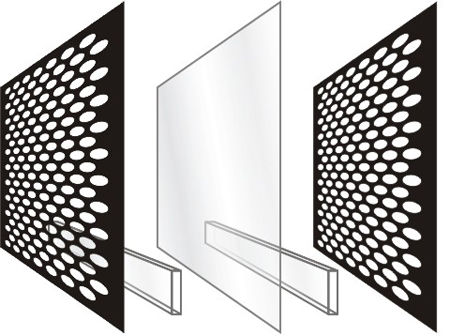
For those who aren't familiar with electrostatic speakers, they start with a large, thin, lightweight membrane impregnated with an electrically conductive material. This membrane, called the diaphragm, is stretched taut between two rigid, parallel, perforated metal plates called stators. The diaphragm is charged with a very high, constant voltage while the audio signal is fed to the stators, one out of phase with the other. As the current in the stators varies with the audio signal, the resulting electromagnetic fields push and pull the charged diaphragm, causing sound waves to emanate in front of and behind it, passing through the stators' perforations.
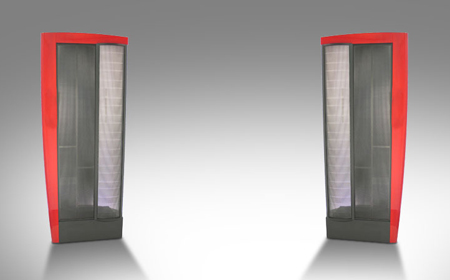
The CLX includes two electrostatic drivers, both 57 inches tall. The CLS Xstat driver uses ML's characteristic Curvilinear Line Source (CLS) design, in which the diaphragm and stators curve outward to disperse the midrange and high frequencies horizontally.
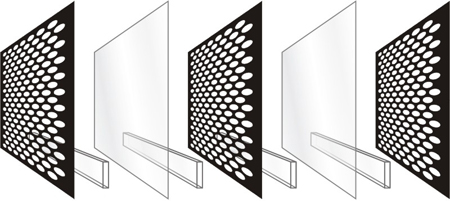
Low frequencies are reproduced by a second electrostatic driver called the DualForce. This flat transducer has two diaphragms with a third stator separating them, an approach designed to double the low-frequency output, since the two diaphragms vibrate in phase with each other (one is charged with positive voltage, the other with negative voltage). In addition, dipole-stabilization technology reduces the rear- and front-wave cancellation inherent in dipole drivers at low frequencies, increasing overall output and minimizing total harmonic distortion. With the Xstat and DualForce drivers in play, the CLX's frequency response is 56Hz to 23kHz, ±3dB.
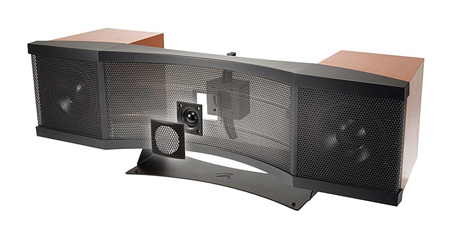
The center channel of my dream MartinLogan system is served by the Stage, a hybrid design with two 6.5-inch aluminum-cone woofers flanking a CLS Xstat driver. In the center of the Xstat is a soft-dome tweeter. This unique mounting system is said to virtually eliminate high-frequency diffraction and increase midrange/treble phase coherence and time alignment while offering superior dispersion characteristics. Frequency response is spec'd at 69Hz to 22kHz, ±3dB.
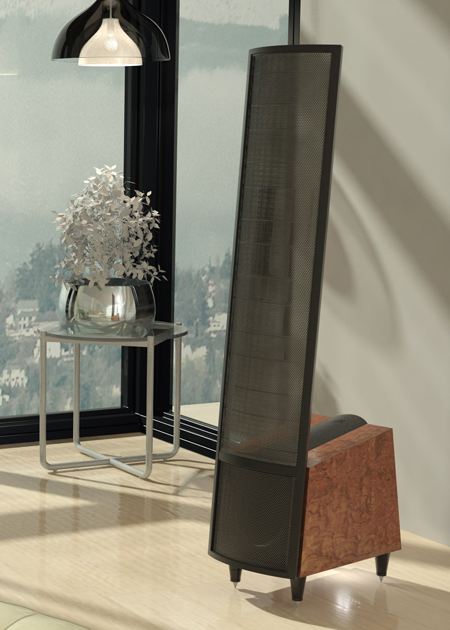
Surround duties are handled by the Summit X, another hybrid design that combines a CLS Xstat panel with two 10-inch aluminum-cone woofers in ML's PoweredForce configuration. The woofers face forward and downward and operate in phase below 100Hz and out of phase above that frequency in order to mimic the dipole characteristics of the electrostatic panel without inducing cancellation at very low frequencies. As a result, the Summit X has a frequency response of 24Hz to 23kHz, ±3dB.
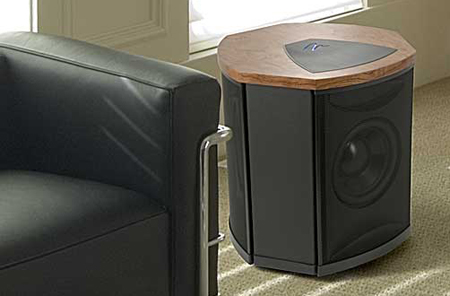
As you might have surmised by now, electrostatic transducers do not easily reproduce low frequencies, which is why many ML speakers are hybrids that include conventional cone-based woofers. This is especially important in the LFE department, so the company offers several non-electrostatic subwoofers, such as the top-dog Descent i. A surprisingly small sub, the Descent i includes three 10-inch aluminum-cone woofers in MartinLogan's BalancedForce configuration that places them facing outward at 120 degrees from each other, effectively canceling any cabinet vibrations. With three 250W power ampsone for each driverthis puppy reaches from 18 to 120Hz, ±3dB.
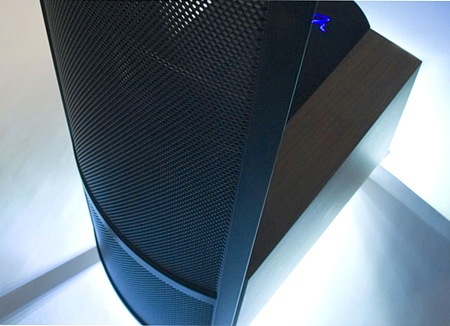
The ML system I've come up with here would be best served by at least two Descent i subs along with optional subwoofer-crossover boards for the CLXs. And it certainly needs a huge room, which shouldn't be a problem for anyone actually contemplating a purchase. If you're such a person, a 5.2 system starts at just over $46,000 and goes up from there depending on the finishes you want, while a 7.2 package will set you back at least $60,000. But hey, who cares about money when you're dreaming of being surrounded by the sound of MartinLogana sound whose well-deserved reputation I can enthusiastically confirm.





























































